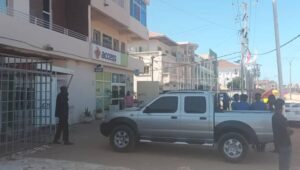
Jerome Delay/AP
The Gambia’s poverty picture is getting gloomier. About 200,000 Gambians are now living in extreme poverty, according to the report of World Poverty Clock, an Austria-based data lab that monitors global poverty. The reports says about 9.5 per cent of The Gambia’s population are living below a dollar a day.
It is a slight fall to last year’s report which had 10.5 per cent of The Gambia’s population (about 216,580 Gambians) was living in extreme poverty. The report stated that about 18,171 Gambians have escaped extreme poverty since February 2018.
The World Poverty Clock is based on a global standardised database on income which provides real-time projections on income for every individual in the world. It counts every second an individual falls into poverty or escape from it. The clock was set up in 2015 to monitor the United Nations global target of ending poverty by 2030. The Gambia’s extreme poverty target for 2030 is below 3 per cent of the population.
According to the World Bank, a person can be said to be living in extreme poverty, if he or she lives below the poverty line of $1.90 or 95 dalasi per day. The World Bank in its explanation of poverty levels said: “when estimating poverty using monetary measures, one may have a choice between using income or consumption as the indicator of well-being.
“Most analysts argue that, provided the information on consumption obtained from a household survey is detailed enough, consumption will be a better indicator of poverty measurement than income.”
The World Bank cites economic growth, which improves the income generating opportunities of the poor, as the biggest contributor in the decline of extreme poverty.
Poverty in The Gambia is largely a rural phenomenon, with 74 per cent of the rural population living below the poverty line.
The Gambia’s poverty rate directly correlates with the country’s agriculture reliance. More than 60 per cent of the population depends on agriculture for their livelihoods. This lack of economic diversity has devastating effects on the populace, for agriculture is unreliable and its success is subject to many outside influences.
The dependency on women is another defining characteristic of the high poverty in the rural areas. The majority of the rural population is female, with women accounting for 70 per cent of unskilled labourers and more than half of the agricultural labour. Most rural women do not own land and do not have access to credit. Compared to men, women are not only more likely to be impoverished, but the poverty they endure is also more severe.










One Comment